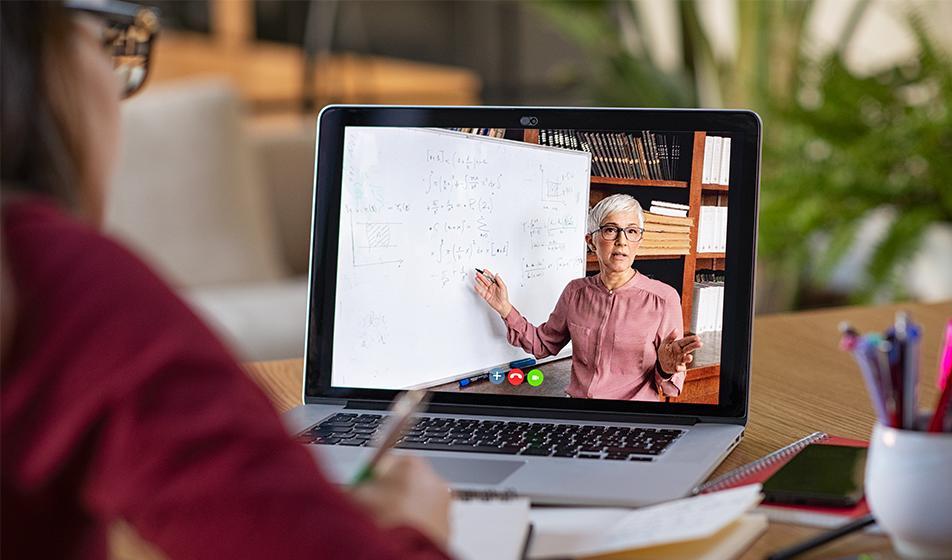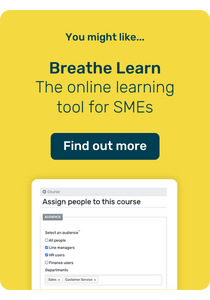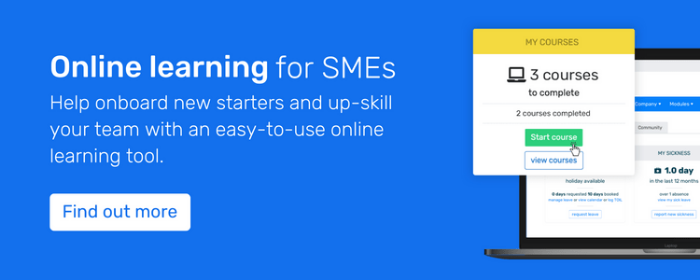Have you heard of microlearning? It’s something of an eLearning buzzword and has strong potential to support employee development in busy SMEs. A Deloitte study found that employees have just 1% of a typical modern week to devote to training and development. Could microlearning be the solution?
In the spirit of microlearning, we’re keeping this blog short and to-the-point and will be covering:
- What microlearning is
- Why microlearning works
- How to start implementing microlearning in your own business.
What is microlearning?
Microlearning is learning that is flexible, short and direct. Unlike lengthy all-day courses or an hour-long e-learning module, microlearning is fast and easy to pick up. It is often available ‘in the flow of work’. This makes it ideal for supporting employees as they work, helping them do their jobs more effectively.
You may hear microlearning referred to as micro training, nanolearning or bitesize
A lot of microlearning is delivered online, using videos, snippets of information and quizzes. However, on-the-job learning could also be considered as microlearning. In this situation, a manager, supervisor or co-worker shows employees how to do something or shares information that will help them do their jobs more effectively. Crucially, they do this on the spot, helping employees learn ‘in the flow of work’.
Why does microlearning work?
The theory behind microlearning is that a flexible approach to learning fits better around an employee’s working patterns. Instead of a disruptive ‘block’ of learning, the employee can learn at a time that suits them.
Here’s an example.
Imagine you are in a day-long training course. The day starts well, with lots of energy and plenty of note taking. But after a while, it becomes more difficult to focus. Still, with a few breaks and plenty of coffee you make it through the day and get a certificate to demonstrate your new-found knowledge.
A few days after the training session, you find yourself needing to use the information you learnt. Despite having spent several hours learning about that topic, you can’t remember the necessary details and need to refer back to your notes. In fact, it’s only after you’ve been doing this for several months that you consider yourself fully capable.
Sound familiar?
Here’s what’s going on:
-
Cognitive fatigue
Cognitive fatigue – or as you might refer to it – mental exhaustion is all too real. The brain is a greedy organ, using 20% of our bodies’ energy requirements. The feeling that you just can’t concentrate properly can be relieved by a short rest. But if you’re in an all-day training session, it’s likely you will be exhausted by the end of the day, even with breaks. How much of the latter parts of the training session will you really be able to remember?
-
Information retention
You won’t be surprised to read that our ability to remember information decreases over time. This is known as the ‘Ebbinghause forgetting curve’. Experiments show that an incredible 50% of new information is forgotten 20 minutes after a lesson ends. In fact, only 24% of the information learnt is retained in 31 days, unless you revise the topic or repeat the learning in some way. Microlearning works by providing ‘revision’ and repetition to support learning.
-
The need for repetition
The more you repeat and use information, the more likely it is for this information to become part of your long-term memory. This is referred to as ‘consolidation’. Some really clear examples of this would be if you are learning a new language or learning to drive a car – you need practice in order to become proficient. Microlearning helps employees repeat their learning until it’s become engrained in their knowledge.
-
Spacing
The other thing that makes microlearning so effective is what’s known as ‘spacing’. Learners need ‘spaces’ – or breaks – between learning. These help process information and move it from your short-term memory into your long-term memory. Microlearning provides these breaks, giving our brains a chance to process that information.
How to implement microlearning
Microlearning works – there’s no doubt about that. But how could you put it into practice in your SME? Here are some of the things to consider:
Microlearning is part of a broader approach to learning
You can’t use microlearning to cover all bases. Employees will still need classroom type learning, mentoring and on-the-job training. Microlearning can be a powerful addition to classroom and on-the-job training but shouldn’t be relied upon to deliver all workplace development needs.
Work with your employees and their managers
Collaborating with the people who need the training will help you identify where microlearning will be most effective. Remember that employees may respond differently to the tools you provide. Millennial and Gen-Z employees will be familiar with many of the online / device-based tools available, while older employees may prefer a different approach.
Identify the roles and topics most suitable for microlearning
Some topics are well-suited for microlearning. It’s especially effective in situations where employees may need to know information about a wide range of topics. For example – the details for a new range of products that you are selling in your stores or allergen information in a new menu. Storing this detail in an easy-access platform means employees can quickly refer to the information they need. Another example could be flowcharts to help remind employees how to implement new processes such as raising purchase orders.
Use a variety of tools to deliver microlearning
Although microlearning typically refers to digital information, this doesn’t always need to be the case. Posters and flipbooks are low-tech but highly effective – think about the posters that show you how to wash your hands effectively at a doctor’s surgery. They deliver the right information at the right time and in the right format. In comparison, a phone-based guide to handwashing would be impractical.
Review the impact of your company’s microlearning materials
As with all learning and development, it’s essential to stay on top of what your microlearning is delivering. Is it helping employees deliver against their objectives and improving productivity and customer satisfaction? If not, then work with your employees and managers to understand how it could be made more useful.
Ready to improve your SME’s learning capabilities? Breathe Learn is an easy way to upskill your people and drive business success.

Author: Laura Sands
Laura is a writer who enjoys getting into the detail of subjects and sharing that knowledge with snappy, interesting content. When not typing away, she enjoys walks in the woods and curling up with a good book and mug of something hot.
Posted on 24 January, 2023
By Laura Sands
in Performance and productivity
Performance and productivity





